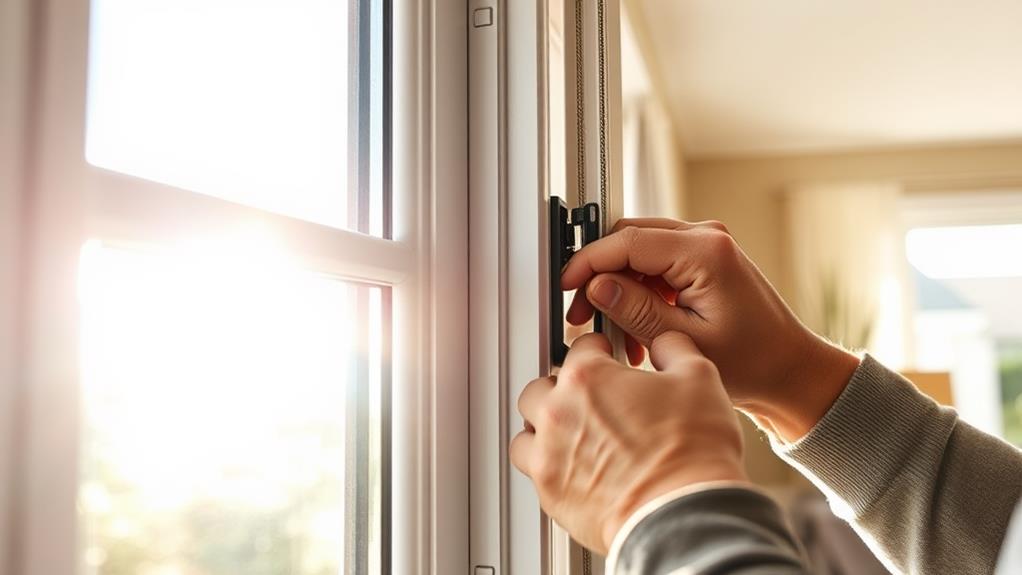Proper window and door installation can significantly reduce your home's energy loss, potentially saving you up to 30% on heating and cooling costs. By creating an effective air seal, preventing infiltration, and optimizing thermal performance, you'll maintain a more stable indoor climate with fewer drafts. Energy-efficient windows and doors not only lower your utility bills but also reduce your carbon footprint and improve indoor air quality. You'll enjoy enhanced comfort, better soundproofing, and protection from harmful UV rays. With proper maintenance, these benefits can last for years, making it a smart investment for your home and the environment. Discover how this simple upgrade can transform your living space.
Understanding Energy Loss
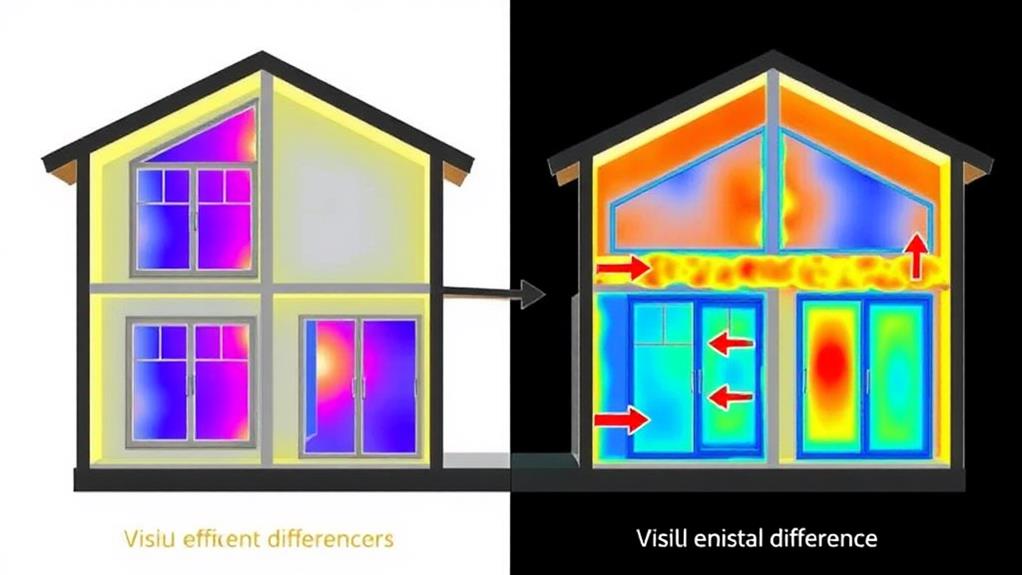
When it comes to energy efficiency in your home, understanding energy loss is crucial. Energy loss occurs when heated or cooled air escapes your house, forcing your HVAC system to work harder and consume more energy. Windows and doors are major culprits in this process, accounting for up to 30% of a home's total energy loss.
Your windows can lose energy through conduction, convection, radiation, and air leakage. Conduction happens when heat moves through the glass and frame materials. Convection occurs as air circulates between the panes, while radiation involves heat transfer through electromagnetic waves. Air leakage is the direct passage of air through gaps and cracks.
Doors contribute to energy loss similarly, with air infiltration being the primary concern. Poorly sealed or installed doors create drafts, allowing conditioned air to escape and outdoor air to enter. This constant exchange forces your heating and cooling systems to compensate, increasing energy consumption.
Proper Installation Techniques
Proper installation techniques can make or break your energy-saving efforts when it comes to windows and doors. To ensure optimal performance, you'll need to focus on several key areas during installation.
First, create a proper air seal around the window or door frame. Use high-quality weatherstripping and caulk to fill any gaps between the frame and the wall opening. This prevents air leakage and moisture infiltration. Don't forget to insulate the space between the frame and rough opening with low-expansion foam.
Next, ensure correct leveling and plumbing of the unit. An improperly aligned window or door won't function efficiently and may lead to air leaks. Use shims to adjust the frame, but don't over-tighten, as this can cause warping.
Pay attention to flashing details. Properly installed flashing directs water away from the opening, preventing moisture damage and air infiltration. Use a layered approach, starting with the sill flashing and working your way up.
Air Infiltration Prevention
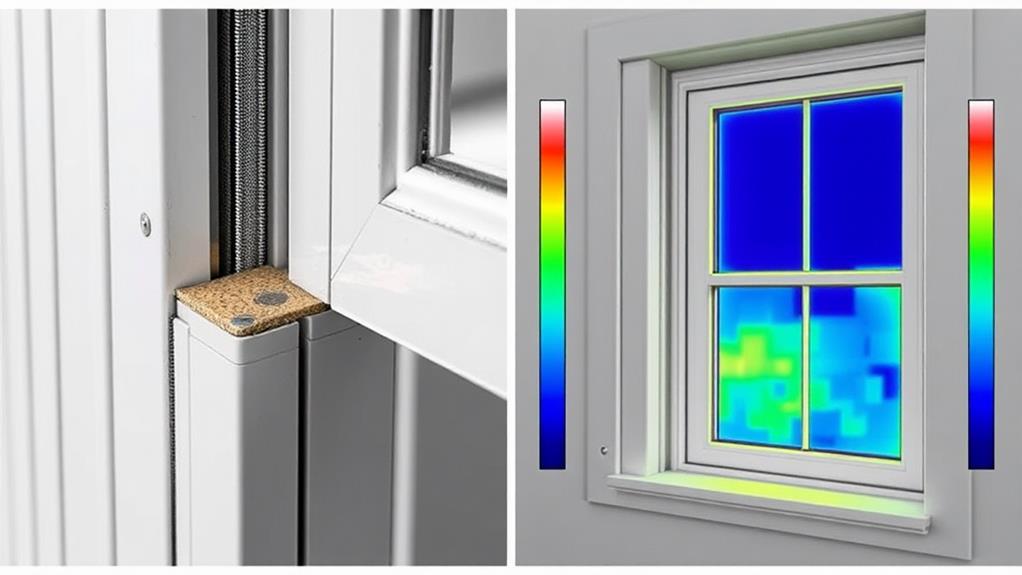
How can you effectively prevent air infiltration around your windows and doors? Start by inspecting the existing caulk and weatherstripping. If you notice gaps, cracks, or deterioration, it's time to replace these materials. Use high-quality silicone caulk for exterior sealing and apply it smoothly along the joints where the window or door frame meets the wall. For interior sealing, opt for paintable acrylic latex caulk.
Install new weatherstripping around movable parts of windows and doors. Choose appropriate types for each application: V-strip for double-hung windows, foam tape for casement windows, and sweep weatherstripping for the bottom of doors. Ensure a snug fit without impeding operation.
Consider adding foam gaskets behind outlet covers and switch plates on exterior walls to reduce air leakage. For older windows, apply shrink film or install storm windows to create an additional barrier against drafts. Don't forget about your attic hatch; weatherstrip its perimeter and add insulation to its back.
Regularly maintain these air-sealing measures to ensure their effectiveness. By implementing these strategies, you'll significantly reduce air infiltration, improving your home's energy efficiency and comfort.
Thermal Performance Optimization
While preventing air infiltration is a key step, optimizing the thermal performance of your windows and doors can further enhance energy efficiency. To achieve this, you'll want to focus on three main areas: glazing, framing, and insulation.
For glazing, consider double or triple-pane windows with low-emissivity (low-E) coatings. These coatings reflect heat back into your home during winter and keep it out during summer. Gas-filled spaces between panes, typically using argon or krypton, provide additional insulation.
When it comes to framing, materials matter. Vinyl, fiberglass, and wood frames offer better insulation than aluminum. Composite frames combine materials for optimal performance. Look for frames with thermal breaks to reduce heat transfer.
Proper insulation around windows and doors is crucial. Use expanding foam insulation to fill gaps between the frame and rough opening. Install weatherstripping around movable parts and caulk stationary joints.
You can also add window treatments like cellular shades or thermal curtains to improve insulation. For doors, consider adding storm doors or using models with built-in insulation cores.
Cost-Benefit Analysis
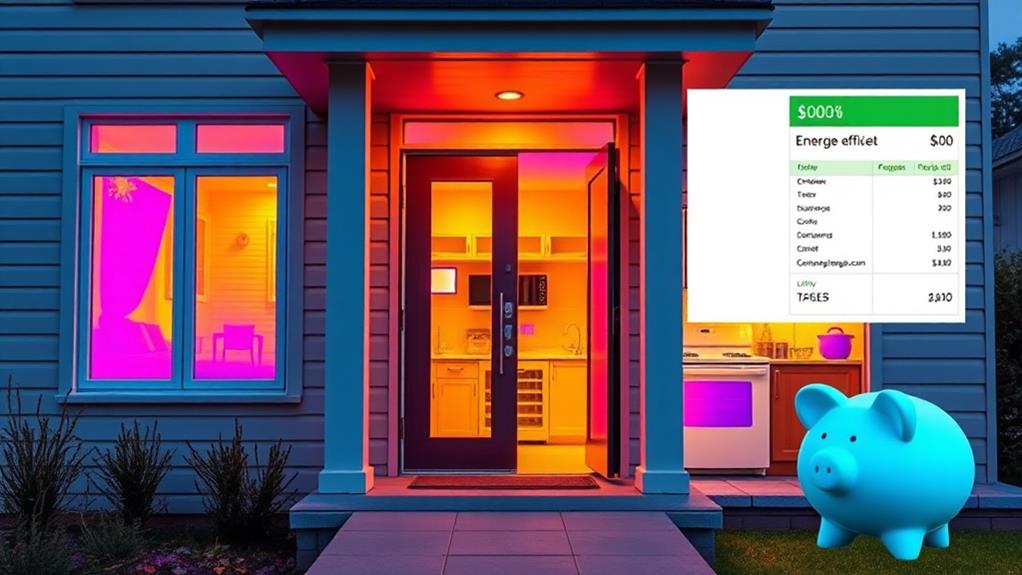
Investing in energy-efficient windows and doors often raises questions about cost-effectiveness. To determine if it's worth the investment, you'll need to consider several factors. Start by evaluating your current energy bills and estimating potential savings after installation. Factor in the upfront costs of materials and professional installation, as well as any available tax credits or rebates for energy-efficient upgrades.
Calculate the payback period by dividing the total cost by the annual energy savings. Typically, high-quality windows and doors can pay for themselves within 5-10 years through reduced energy bills. Don't forget to account for increased home value and improved comfort. Energy-efficient installations can boost your property's resale value by up to 10%.
Consider long-term benefits as well. Modern windows and doors often come with extended warranties and require less maintenance, saving you money over time. They also provide better insulation, reducing wear on your HVAC system and potentially extending its lifespan. By weighing these factors, you can make an informed decision about whether the investment aligns with your financial goals and energy-saving objectives.
Environmental Impact Reduction
Beyond financial considerations, energy-efficient windows and doors play a significant role in reducing your home's environmental impact. By installing these upgrades, you're directly contributing to lowering greenhouse gas emissions. When your home requires less energy for heating and cooling, power plants don't need to produce as much electricity, resulting in fewer carbon emissions.
You'll also be conserving natural resources. Energy-efficient windows and doors often use sustainable materials and manufacturing processes. This means less waste and reduced exploitation of raw materials. Additionally, by improving your home's insulation, you're reducing the strain on HVAC systems, which can extend their lifespan and decrease the need for frequent replacements.
These upgrades can significantly reduce your carbon footprint. For example, ENERGY STAR certified windows can lower household energy use by an average of 12%. This translates to a substantial reduction in CO2 emissions over the lifetime of the windows. Moreover, proper installation ensures that you're maximizing these benefits, preventing air leaks that could negate the positive environmental impact. By choosing energy-efficient windows and doors, you're making a lasting contribution to environmental conservation.
Comfort and Indoor Air Quality
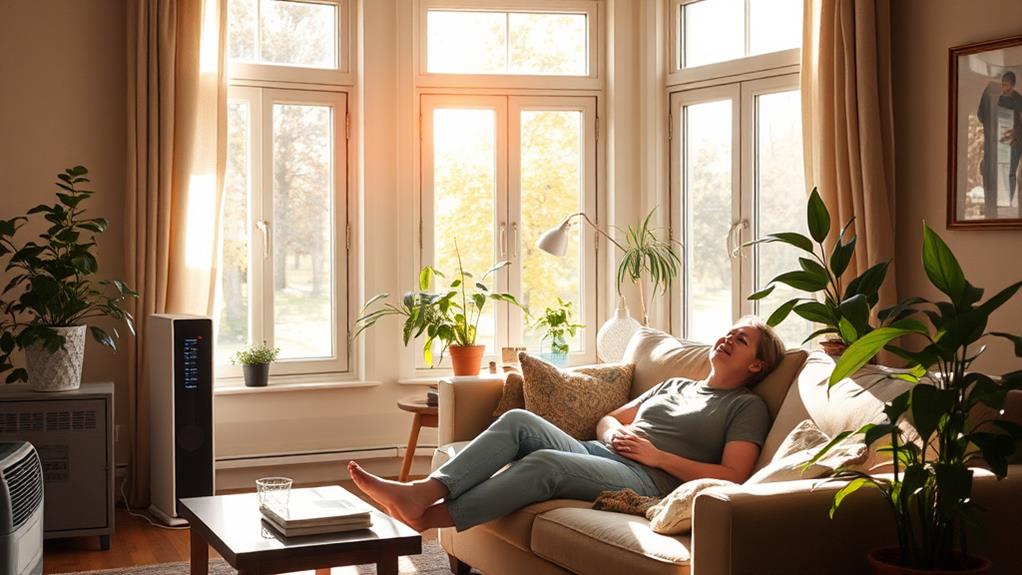
Enhancing comfort and indoor air quality, energy-efficient windows and doors offer benefits that go far beyond energy savings. You'll notice an immediate improvement in your home's temperature consistency, with fewer drafts and cold spots. These installations help maintain a more stable indoor climate, reducing the strain on your heating and cooling systems.
Proper sealing and insulation of windows and doors also minimize the infiltration of outdoor pollutants, allergens, and moisture. This can significantly improve your indoor air quality, potentially reducing respiratory issues and allergies. You'll breathe easier and enjoy a healthier living environment.
Energy-efficient windows often feature low-emissivity coatings that filter out harmful UV rays while allowing natural light to enter. This protects your furnishings from fading and reduces glare, creating a more comfortable space for work and relaxation.
Additionally, well-installed windows and doors can help control humidity levels inside your home. By preventing excess moisture from entering, you'll reduce the risk of mold growth and improve overall air quality. You'll also experience enhanced soundproofing, creating a quieter, more peaceful indoor environment that's conducive to rest and productivity.
Long-Term Maintenance Considerations
Three key factors should guide your long-term maintenance considerations for energy-efficient windows and doors: regular inspections, timely repairs, and proper cleaning.
First, you'll need to conduct regular inspections to catch potential issues early. Check for signs of wear, such as cracks in the weatherstripping, loose seals, or damaged frames. Don't forget to examine the caulking around the frames, as it can deteriorate over time. These inspections should be done at least twice a year, ideally in spring and fall.
Second, address any problems promptly. If you notice drafts, condensation between panes, or difficulty opening and closing, don't delay repairs. Timely fixes can prevent minor issues from becoming major, costly problems that compromise your home's energy efficiency.
Lastly, proper cleaning is crucial for maintaining your windows and doors. Use non-abrasive cleaners and soft cloths to avoid scratching glass or damaging frames. For vinyl frames, mild soap and water work well. Wooden frames may require periodic repainting or restaining to protect against moisture and UV damage. Keep tracks and hinges clean and lubricated to ensure smooth operation and prevent wear.
Conclusion
You've learned how proper window and door installation can revolutionize your home's energy efficiency. But what if there's more at stake? As you contemplate your next steps, consider this: the choices you make today will impact your comfort, wallet, and the planet for years to come. Will you settle for the status quo, or will you take action? The power to transform your living space is in your hands. What will you do?
